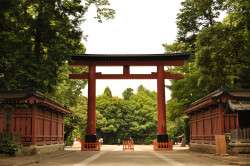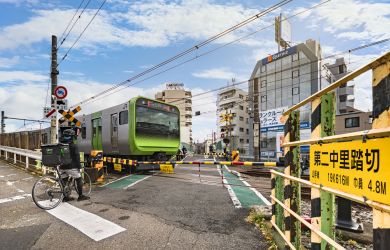
December 3, 2009
Pasona O2
A growing interest in urban agriculture produces greenery in the heart of Tokyo
By Metropolis
Originally published on metropolis.co.jp on December 2009

Photo courtesy of Pasona O2
I’m looking at a rice paddy that’s just about ready to be harvested. The leaves reach almost to my waist, and the stalks are weighed down by the fullness of the grains. It’s peaceful and quiet here—just a bit of rustling as I brush by the plants on the winding path between the terraces.
If you thought this bucolic scene was in Akita or some other rustic locale, think again. This is the Rice Terrace room of Pasona O2, a verdant, underground farm in the heart of Tokyo.
O2 is operated by the Pasona Group, a well-known Japanese temporary staffing and recruiting agency. It came about as part of an initiative to create new jobs in the agricultural sector. Despite the fact that urban migration has led to a precipitous drop in the number of people living in farming areas, the company feels that, given the right conditions, there could be a strong future for Japanese agriculture.

Photo courtesy of Pasona O2
“Interest in ‘food safety’ is growing in Japan,” a Pasona spokesman tells Metropolis, “and there are increasing numbers of people who are renting farms in order to grow their own safe produce, along with growing numbers of people interested in agriculture.” All they are missing is a little know-how.
Located in Otemachi, the O2 facility serves as both a showcase for locals and a training facility for future farmers. According to the project’s website, it was set up in February 2005 “to help people in the city familiarize themselves with agriculture and to keep them informed about the latest developments in the field.” Despite being only a few years old, O2 is already undergoing modifications to improve and modernize its facilities. It will reopen in January for casual visitors and anyone wishing to attend training seminars (the actual location has yet to be announced).
One of the goals of the project is to experiment with the latest technologies in urban horticulture. Along with hydroponics and customized soil cultures, O2 employs a variety of light sources for growing—LEDs, for instance, are used on flowers, with different wavelengths maximizing color rendition. Other rooms use different forms of lighting to grow everything from rice to herbs to fruit and vegetables. Temperature and humidity are tightly controlled to optimize conditions.
While critics assert that the energy demands for artificial lighting and climate make this kind of indoor farming unsustainable, it does have several significant advantages. Produce grown on farms is often shipped great distances to reach a grocery store, consuming fossil fuels in the process. Moving production to the city center slashes carbon output. What’s more, controlled environments can make produce safer, and crops often grow more quickly than at traditional outdoor farms.

Photo courtesy of Pasona O2
“Cultivation can be completed without fear of weather- and natural disaster-related risks, enabling systematic harvesting,” says the Pasona spokesman. “The time to harvest is also shortened, and vitamin-rich vegetables [that are] as good as naturally grown vegetables can be produced.”
Even if urban farming isn’t the most efficient way of growing food, the methods that researchers develop are likely to have an important impact in the future. According to the UN’s Department of Economic and Social Affairs, nearly 70 percent of the world’s population will live in urban areas by the year 2050. In the interest of self-sustainability and environmental protection, city dwellers will need to think about ways to integrate food production into their environment, whether through indoor facilities like O2 or more conventional methods like rooftop gardens.
With a high population density and one of the worst rates of food self-sustainability among developed nations, Japan has a vested interest in pursuing innovative food production projects. Its technophilic culture and concern for food safety are important, but it all begins with community involvement. So when O2 reopens its doors in January, we’ll find out if Tokyoites are ready to get their hands dirty.
To find out more about Pasona O2, see www.pasonagroup.co.jp/pasona_o2 (Japanese).







